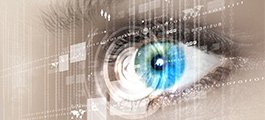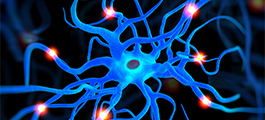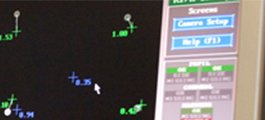Strathclyde oculomotor lab
Our research looks at aspects of human attention, in terms of how it is allocated, influenced and disrupted. We do this through the examination of human eye movements by using eyetrackinq equipment with both a high spatial and temporal resolution across two laboratory suites.
Within the lab we are also looking at aspects as diverse as:
- how addiction biases our allocation of attention
- how individuals who are socially anxious misread facial emotion
- gender differences in how our attention is captured by faces
- how ageing affects the interpretation of social information
Most of the work in the lab is conducted with SR Research eye movement analysis machines. We also use several pc- based systems for non-eyetracking experimental data display and response collection.
Who we are working with
Within the University, we are currently working with Professor John Soraghan’s group (CESIP EEE) on work designed to quantify facial information. This study has been funded by Bridging the Gap. This study also uses the expertise of Dr Simon Kyle from the University of Glasgow Sleep Centre.
We have joined up with Dr Dino Rotondo in the Strathclyde Institute of Pharmacy and Biomedical Sciences and Dr Catherine Winchester from the University of Glasgow Institute of Neuroscience and Psychology to examine the influence of stress markers and genetics on biases in attention to smoking-related objects in smokers. This study is also funded by Bridging the Gap.
We work with Dr Gillian Bruce from the University of the West of Scotland in research examining biases in attention in those who smoke, and in those who consume alcohol.
Examples of current work
- a flicker change blindness task employing eye tracking reveals an association with levels of craving but not consumption
- females capture but don’t hold each other’s faces: an eye movement study
- socio-cognitive load and social anxiety: processing efficiency and performance in an emotional antisaccade task
- inhibitory and vector inversion deficits during antisaccades in hemispatial neglect and visual form Agnosia (patient DF)
How we work
Recently we have started working in partnership with Safety At Sea Ltd in a human factors venture examining improved maritime safety. We are interested in improving the mechanisms where aspects such as ease of escape route identification are examined in the initial stages of ship design.
Also, we are working with the charity Action on Depression in a study examining the usability of their web interface for individuals with depression.





